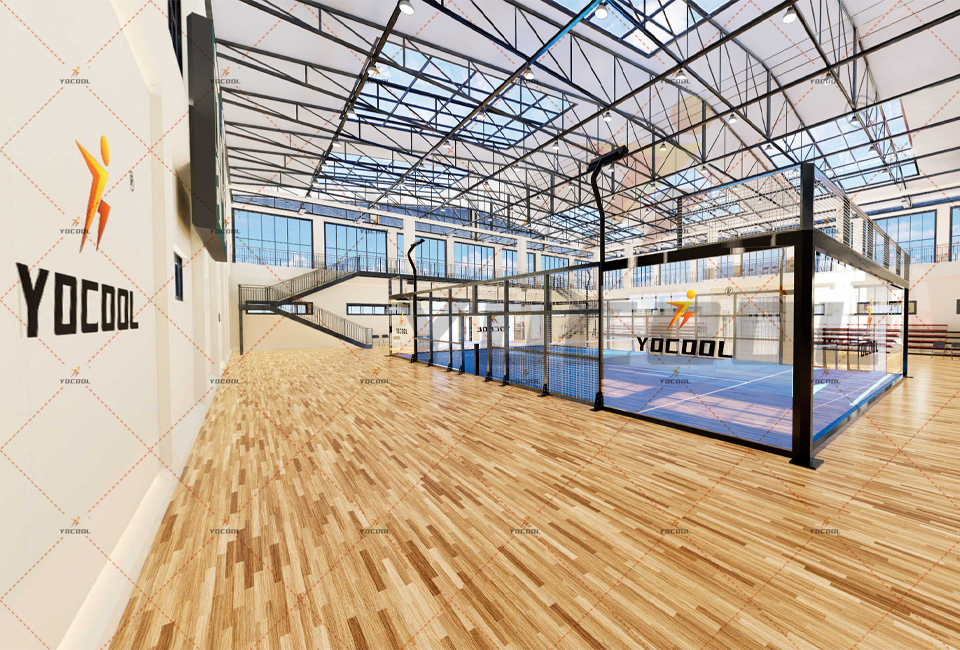

Understanding Padel Court Costs from Manufacturers
Padel, a rapidly growing racquet sport that combines elements of tennis and squash, has gained significant popularity across the globe. As more players and enthusiasts want to set up their own courts, understanding the costs associated with constructing a padel court becomes crucial. In this article, we will explore various factors influencing the cost of padel courts, particularly focusing on insights from manufacturers.
Initial Investment in Padel Courts
Building a padel court is not just about laying down some concrete and erecting a fence. The initial investment encompasses several elements such as court dimensions, materials, and the type of surface. Generally, a standard padel court measures 20 meters by 10 meters and should have a height of at least 3 meters for the walls.
Manufacturers often provide different package options, which can impact the overall cost significantly. On average, the price of constructing a padel court can range from $30,000 to $70,000. This price usually includes the court structure, artificial grass or other surface materials, lighting systems, and fencing.
Surface and Material Choices
One of the primary factors that affect the cost is the choice of surface. Manufacturers offer various options, including artificial grass, concrete, or synthetic materials. Artificial grass is the most popular for padel courts, as it provides better playability and reduces the risk of injury. The quality of the surface can significantly influence the overall price; premium-quality surfaces tend to cost more but often last longer and require less maintenance.
Additionally, manufacturers may recommend specific types of materials for construction based on climate conditions and player preferences. Investing in high-quality materials may increase initial costs but can lower long-term maintenance expenses.

Lighting and Amenities
Another critical aspect to consider is the installation of lighting systems. For padel courts, especially those intended for commercial use or evening play, proper lighting is essential. Manufacturers typically offer various lighting solutions, ranging from basic floodlights to advanced LED systems, which can be more energy-efficient and cost-effective in the long run.
Moreover, adding amenities such as benches, changing rooms, and restrooms contributes to the overall cost. These facilities may be essential for clubs or commercial courts but can also be of interest for private court owners who want to enhance the experience for players and visitors.
Maintenance and Longevity
While initial setup costs are essential, potential owners should also consider long-term maintenance expenses. Padel courts require regular upkeep, including surface cleaning, repairing nets, and maintaining lighting. Manufacturers often provide guidelines for maintenance to ensure the longevity of the court, and some may offer maintenance packages.
Conclusion
In summary, the cost of building a padel court is influenced by multiple factors, including materials, size, surface type, and additional amenities. Understanding these components can help prospective court owners make informed decisions and budget accordingly. Partnering with reputable manufacturers can provide valuable insights and ensure a high-quality construction that stands the test of time, ultimately contributing to the growing popularity of this engaging sport. As padel continues to flourish, investing in a court can be a rewarding venture for both personal and commercial applications.
High-Performance Industrial Flooring Solutions China Paddle Tennis Court for Sale
High-Performance Industrial Flooring Solutions Durable & Cost-Effective
Homogeneous Transparent Floor – Durable & Stylish Rubber Floor Solutions
Premium Homogeneous Transparent Floor for Durable & Stylish Spaces Rubber Floor Solutions
Premium Sports Floor Solutions Durable PVC Sports Floor & Rubber Floor for Gyms
Durable Rubber Composite Floor Premium Rubber Floor & Mats Solutions